#curated folio
Explore tagged Tumblr posts
Text
Super excited cause the AOI put my entry into yet another curated folio, HECK YEEEHHH
1 note
·
View note
Video
youtube
#shakespeare#william shakespeare#first folio#folio#book#victoria and albert museum#a&a#books#musuem#library#curator
16 notes
·
View notes
Note
Hi, I’m just curious. I know that the star/pentacle on a red background symbol for Gawain comes from the green knight but where does the double eagle on the purple background come from?
Hello!
This proved more difficult to find sources for than I anticipated. I didn't want to just say "French texts" and leave it at that. And good thing I didn't! I couldn't find a single textual description of Gawain's eagle device anywhere. Vulgate yielded nothing, no mention of an eagle shield in the stories of Chretien de Troyes. Not even in Le Morte d'Arthur does Gawain's device get a mention! Galahad's red cross on white is always described, Palomides's black armor and insignia is well-documented, but never Gawain's heraldry. Now I was determined to figure this out.
According to The Heraldry Society, many of the coats of arms we associate with the knights of the Round Table are believed to originate from illuminations made around Sir Thomas Malory's time and curated by Jacques d’Armagnac. From there, I was able to track down a book called The Manuscripts and Patronage of Jacques d'Armagnac which catalogues his vast collection. I edited the PDF to enable word-search as it's an 800 page volume and that will make using it much easier. Here's what I found:

Evidently, in an illustrated copy of the Prose Tristan, Gauvain is depicted with "rose arms with gold double-headed eagle." Later in the same text, Mordret's heraldry is described the same but with "a white horizontal bar through it," and Agravain's is once again identical to Gauvain's except with "a white diagonal stick over the eagle." There's no corresponding images present in the book, and what illuminations were included are completely illegible, the scan is atrocious. However each illumination is labeled with a corresponding folio and source text so whenever the British Library's Digitized Manuscripts are fully restored, maybe we can check that out.
And there you have it! As a bonus, here's yet another coat of arms for our friend Calvano, as he's known in Italian, inherited from his pops and described in La Tavola Ritonda.

Hope that helps, it's the best I can do with what I have. Take care!
#arthuriana#arthurian legend#arthurian mythology#arthurian literature#sir gawain#history#heraldry#coat of arms#coats of arms#prose tristan#la tavola ritonda#ask#anonymous
67 notes
·
View notes
Text

The entire collection of Geoffrey Chaucer’s works held by the British Library is being made available in digital format after the completion of a two and a half year project to upload 25,000 images of the often elaborately illustrated medieval manuscripts.
...
Calum Cockburn, the British Library’s curator of medieval manuscripts, who is in charge of the project, said: “One manuscript of the Canterbury Tales has got this incredible portrait of Chaucer himself that appears at the very beginning of the General Prologue and the famous line, ‘Whan that Aprill with his shoures soote’ [’When April with its sweet smelling showers’]. And in the W of Whan, Chaucer appears with a book open and a quill. That is a really wonderful detail because there aren’t that many surviving portraits of him." “Another of my favourites is a collection of treatises in its own original medieval binding with a clasp on it. And it's intact, it’s been the same for 600 years.” The digital collection had “staggering potential”, he said, and the 25,000 images were of “incredibly high resolution … You can zoom into these images and see detail on the page you would not be able to with the human eye in person. They are really stunning."
Here is the aforementioned folio featuring Chaucer's portrait (Lansdowne MS 851).
#it's fun to look at an old manuscript and see the familiar words in their original context#manuscript#you can just go to the british library's digitised manuscripts website and type in Chaucer and see it all
82 notes
·
View notes
Text
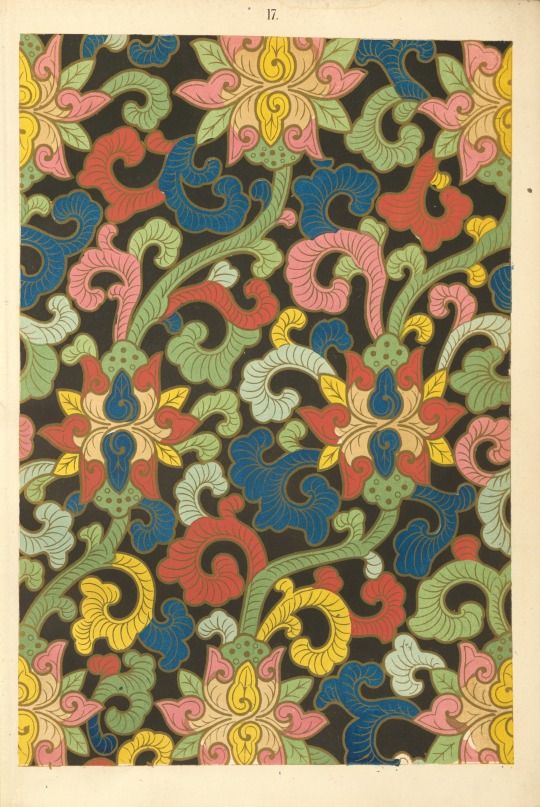

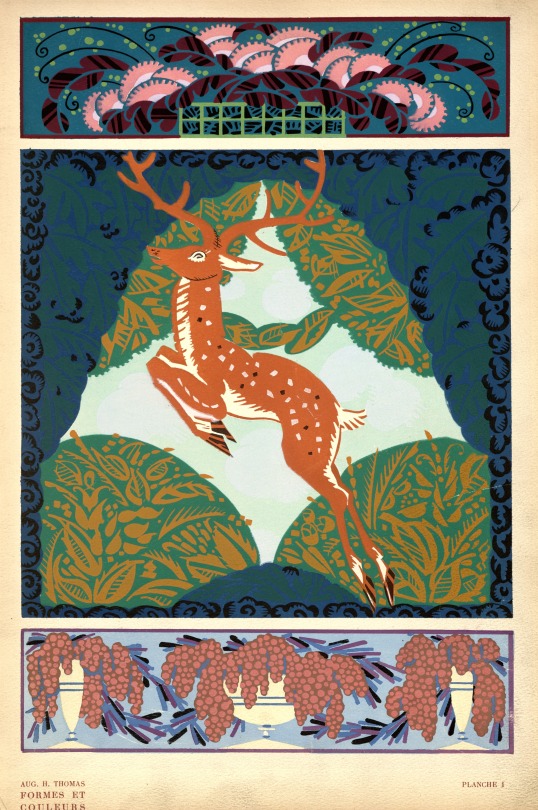
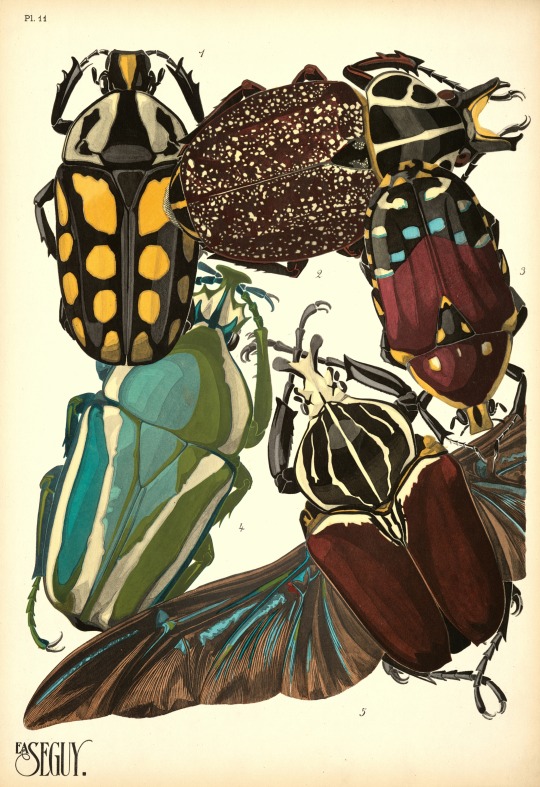
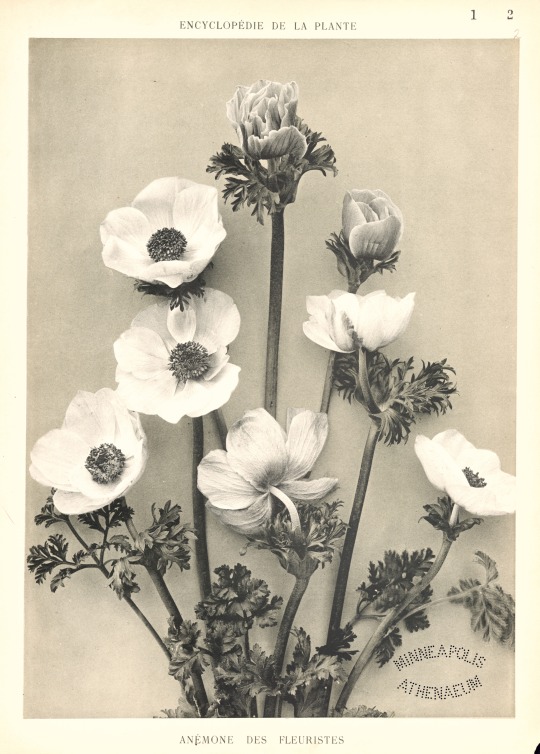
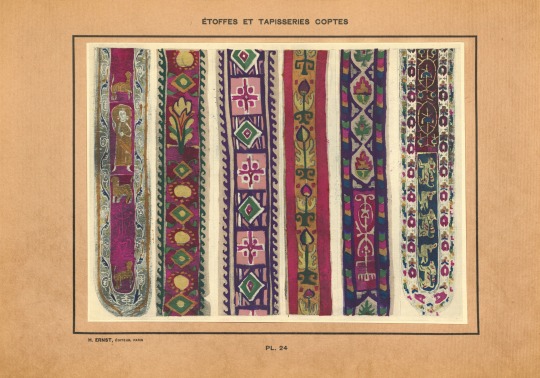
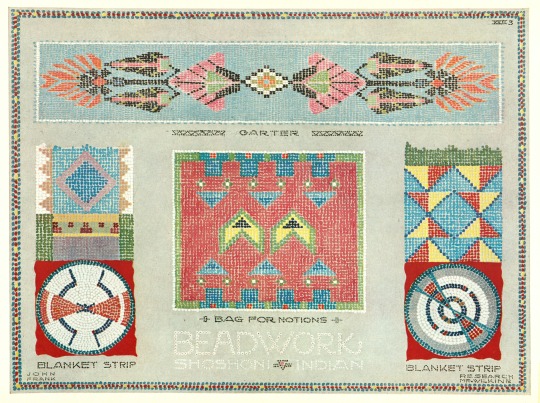

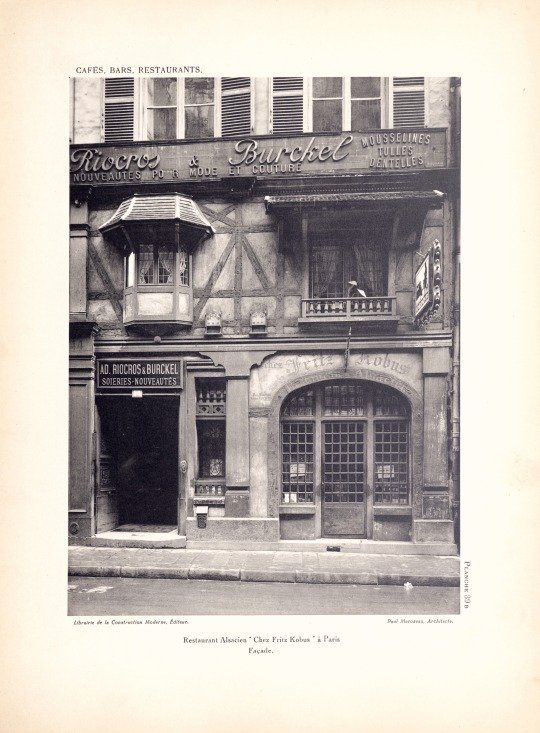
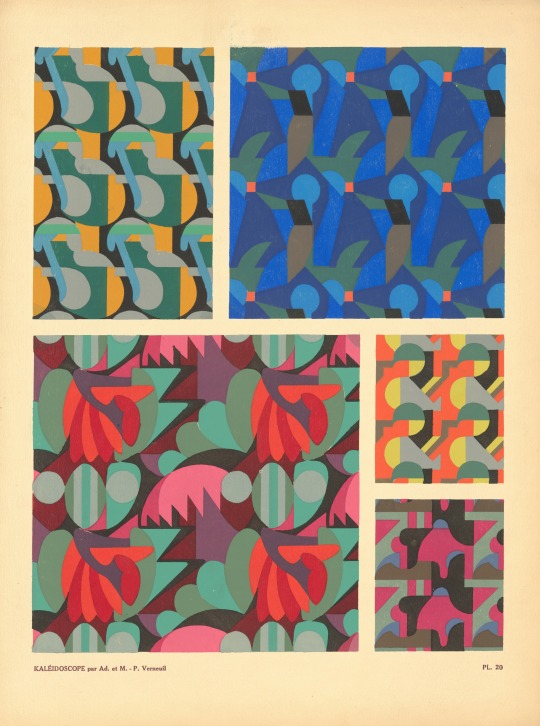
Sneak Peek! Curating a Rare Art Book Exhibit
Special Collections has hired two curators, Heather Carroll and Maya Powell, to curate an exhibit (opening this fall!) highlighting the library's rare art book collection. The Art Book Collection includes over 3,500 books featuring all art forms from around the world, spanning all eras. Most of the books in this collection were produced between 1850 and 1950 and are in the folio format--loose leaves, or pages, tied together in a portfolio. Many have been carefully hand-printed, stenciled or hand-colored.
Here's a peek at some of the treasures they've found in the vaults, many of which will be included in the exhibit.
Visit Cargill Gallery at Minneapolis Central Library from October 4 to November 29, 2023 to see Storied Leaves: Unveiling the Library's Rare Art Book Collection.
97 notes
·
View notes
Text

hi hello i’m having several thoughts. this is also the perfect image for the fic that i’m curating for folio. it’s gonna be angsty as fuck
32 notes
·
View notes
Note
hello! im sorry if you get asked this a lot, but I was curious how you got into doing art ttrpg? and what should an interested artist have in their portfolio? thank you 💖
hi! so i wrote out a big "how to" before re-reading your message and considering you maybe just... asked how it happened for *me*, not necessarily how someone else should do it LOL. so, how it happened for me: i've been actively courting freelance art work since ~2009, and fantasy ttrpg is a natural extension of my interests - my portfolio was already full of world of warcraft fanart by the time ttrpgs & D&D really started having their modern moment. TTRPG is a good low-to-mid level place to find leads, as well, because the barrier for entry is super low for creators, which means a lot MORE projects to go around. (If you want to make a board game, your artist has to know a LOT about packaging, printing, manufacturing, graphic design, etc. if you wrote a D&D module and just want to publish it on itch.io? your artist only needs to know how to send you a decent sized .jpg.) as far as portfolio goes, when i started getting consistent replies to my cold emails, my portfolio had mostly covers and half-pages (ie, narrative illustrations), portraits, and animals. If you want to be more well-rounded you could also include pieces focusing on environments, items, and creatures. Don't include anything unless it's GOOD though. (i am so serious about this - bad work in your portfolio makes the good stuff look like a fluke.) now. if you wanted a "how to" answer, here is 600 words lol. I'm gonna start with the base assumption that your work is already hirable so we can focus on just like, specialization + client acquisition tips. getting a folio up to snuff is a whole other can of beans short version goes like this:

this whole thing only works if you have the ability to honestly self-assess. new work & skills: you should have fresh stuff that's a snapshot of what you can do *right now.* this doesn't mean old work can't stay in your folio if it's still good, but a small, current folio that really hits is WAY better than a bloated old one with irrelevant studies or student work. new artistic peers: as you continue to evolve as a professional, you should have an idea of which other working artists your work is most similar to, in terms of skill/tone/specialties/other relevant skills (3D/graphic design/etc) in order to see how you stack up to your """competition""" for lack of a better word. Additionally those artistic peers have hangout zones (discords or FB groups, etc) where you can talk shop & pass around job leads. research peers' clients: research who those peers are contracting with. See if your work would be a fit for them; if so, find their contact info and put it on your list. Those clients are probably also promoting other similar projects or publishers on their feeds; twitter has a handy "you might also want to follow" list that has other similar accounts you can explore. You can also work backwards from the product to the creator (see any cool battle maps, CCGs, board games, etc? find out who made it and whether they're the ones doing the art hiring.) Additionally, those discords & fb groups I mentioned will have leads (of varying quality) shared around that you should be assessing as they come in. reach out to new batch of clients: cold email. be realistic about who's worth contacting, but don't self-disqualify. that part is a balance. art directors are people with problems to solve, and you need to be able to A. anticipate the problems they need solving, and B. confidently (and honestly) let them know exactly what you can do for them. Attach A FEW, SMALL, RELEVANT jpgs that they can easily download and keep for reference. do not send massive high res attachments, their inboxes are full enough as it is. If you're responding to a specific call, attach relevant pieces or curate a page on your portfolio site specifically for work that would fit the project. If reaching out to clients doesn't result in a lead - *or*, if it takes them 3 months to get back to you, you should spend that time doing your own stuff and bolstering your skills. eventually your portfolio will be good enough that it kicks down doors for you.
you'll notice i never included "be active on social media! post your new work! feed instagram's ad revenue by giving it more content!" in this strategy because it doesn't matter. i'm not professionally active on any social media. we were getting hired before twitter existed and we'll still get hired after it dies. just do make sure you have an online portfolio (your own website >> artstation >>> other free folio builders >>>>>>>>>>>> an instagram feed.) the more times you do this cycle the easier it gets; both because you'll just get good at every step of the process, and because more people will know you and have known you for *longer* so you seem like a safer bet. I'll be honest: it's a ton of rejection lmao. I would get a rejection in my inbox at least once a week - even more than that i'd just get radio silence. But eventually you'll get a yes, and if you're lucky that yes will result in high quality new work you're proud of and can put into your folio (taking you back to step 1 lol.)
the freelance life is (INSHALLAH!!!) behind me since i now have a full time job doing marketing/supporting art for video games. But my portfolio never would've gotten there if i didn't have the experience of going through the freelance meat grinder first. it really taught me how to be an actualized *creative* (who can stand up for her own expertise, think like a project manager, and take creative ownership of / responsibility for my assignments) and not just a hired hand. my team likes that. i think
#not art#ask#freelance artist#not sure i want to tag this for discoverability tumblr thank you#art advice
13 notes
·
View notes
Text
Old Book, New Boards
Following our visit to paper maker extraordinaire Andrea Peterson in the fall (see our November blog post), we were eager to find opportunities to use her handmade papers in our conservation work. Of particular interest was her ABM binders board, which recycles phase box off-cuts to make a delightfully pulpy binders board that is reminiscent of boards used on books throughout the 16th through 19th centuries. Essentially a thick, dense sheet of handmade paper, Andrea’s ABM board is lightweight, alkaline, and comes in a variety of thicknesses that allow for a sympathetic pairing to an older text-block when a new case or binding is necessary.
Hesburgh Libraries recently acquired a c. 15th century manuscript on paper of theological works by Denys the Carthusian. While the manuscript itself dates to the 15th century, it arrived in a much later binding that had broken sewing and very thin detached boards covered in brittle marbled paper.
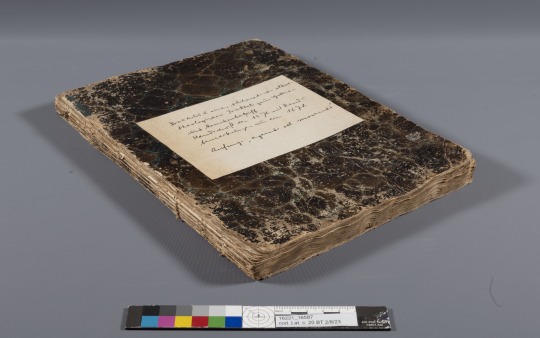
Though we prefer reattaching loose boards where possible, in this case it was determined that splitting or lifting the covering material from these very thin, irregular boards would cause damage. We therefore decided, in collaboration with the curator, that the marble paper covered boards would be retained loose with the manuscript in a cloth-covered clamshell box, and the manuscript would be mended, resewn, and given a new binding.


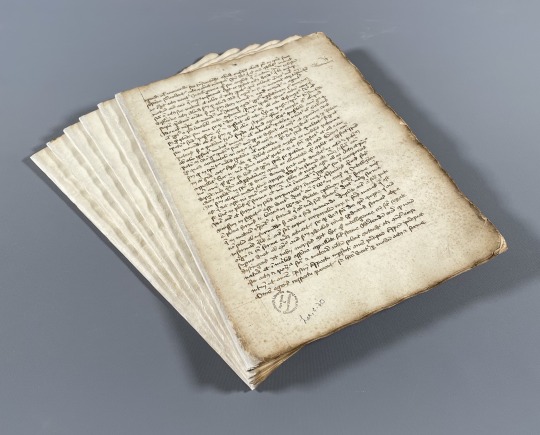
In the process of cleaning and mending the paper in preparation for resewing, a fragment of light blue paper was discovered adhered to one of the inner folios of the manuscript.
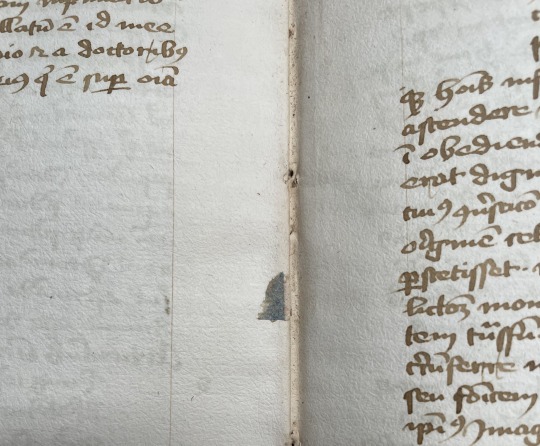
Though it is unclear why and when this paper fragment came to be attached to the manuscript, it is similar to the blue “sugar bag” paper found on many books from the 17th and 18th centuries. In constructing a new case for the manuscript, we used a thin (0.06”) piece of ABM board and covered it with Ruscombe Mills Sesley Sugar Bag handmade laid paper, which closely resembles the fragment of blue paper found inside the manuscript.



Although the new binding does not attempt to be a facsimile of any particular binding, the new case stabilizes the manuscript for use while echoing elements of the manuscript’s history with its thin, textured boards and light blue covering paper.
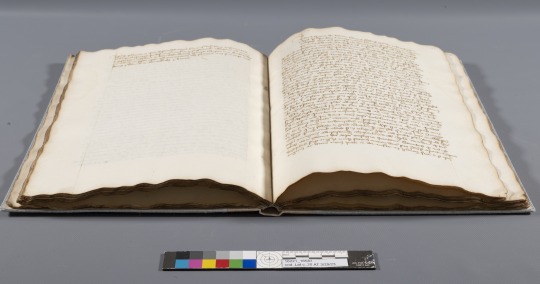

#ndpreservation#conservation#bookconservation#manuscriptmonday#handmadepaper#paperlove#bookbinding#denysthecarthusian#manuscript#rarebooks#NDLibraries
25 notes
·
View notes
Note
hello ! i’m looking for books/media that talk about being an artist in terms of being part of one’s identity and was wondering if you had any recommendations… i’ve been struggling how to word what i’m specifically looking for so idk if this’ll make sense! if u even have places to look or some search terms i could use it’d be much appreciated!
basically like . creators talking about using art as self expression/reflection, how being a creator informs how one moves in the world, capitalism’s effect on how creators view themselves, exploring art & madness… broad but if you think of anything related i’d love to check it out :) thank you!!!
yes, I do have some!
Here are some books on the relationship between one's art (writing, film, documentary, visual arts, etc.) and (often Mad) life - i'm not delineating between fiction and nf here because most are a mix:
Virginia Woolf, On Being Ill
Poupeh Missaghi, trans(re)lating house one
Ruth Ozeki, My Year of Meats.
Chaim Potok, My Name is Asher Lev
Eileen Myles, Inferno
Leslie Jamison, The Empathy Exams
Johanna Hedva, Minerva A Miscarriage of the Brain
Akwaeke Emezi, Dear Senthuran
T Fleischmann, Time is the Thing A Body Moves Through
I curated a folio of Mad creativity / craft in 2021:
Part One
Part Two
And I recently wrote a quasi-craft/bodymind essay, which you can read here.
And here are a two important-to-me craft essays I happen to have bookmarked that feel relevant:
Daydreaming With Leslie Jamison
Brain Fog: An Essay
Hope this helps!
39 notes
·
View notes
Text
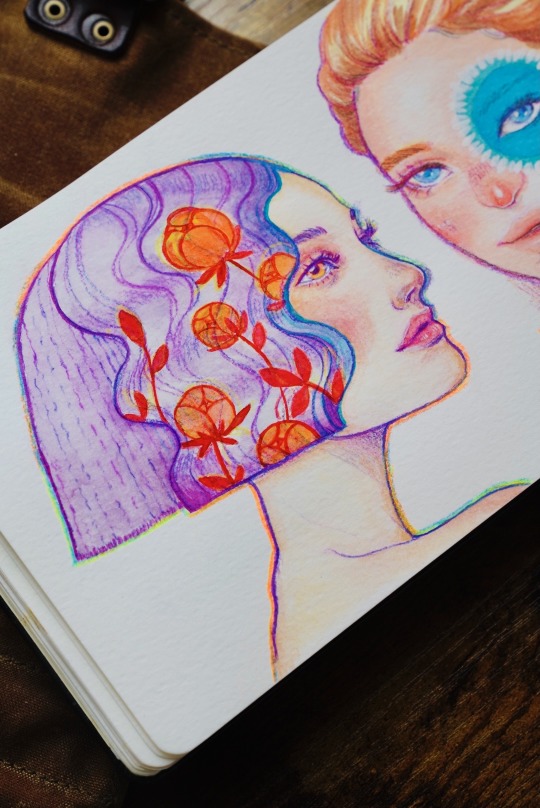
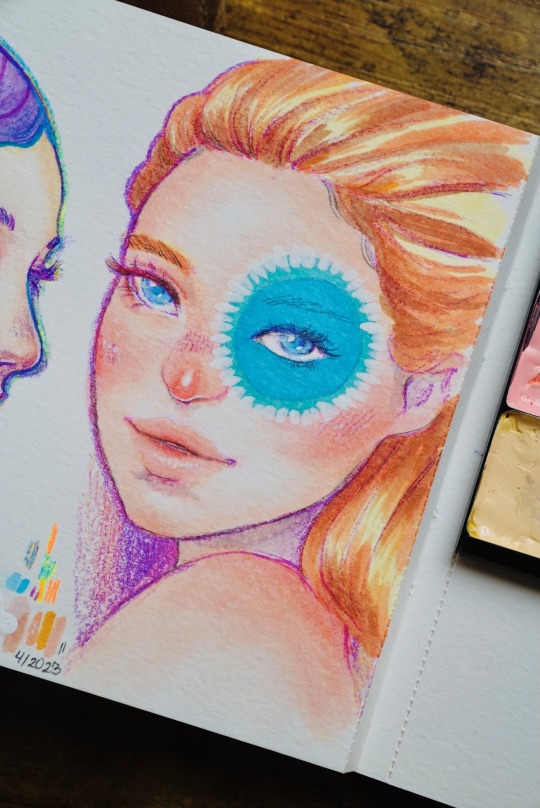
There are a lot of tools pictured here that I know everyone’s going to ask me about, so here’s a handy list.
Sketchbook: Moleskine Art Watercolor Sketchbook, Landscape
Palette: Art Toolkit Folio with Custom Paints
Artist Tool Roll: Peg & Awl Mini Sendak
Brushes: Escoda Pocket Brushes
I’m forever trying to curate the perfect portable art kit, and I have various cases and rolls etc dedicated to different purposes. This tool roll is for portable watercoloring so I can paint at my dinner table, or on the go while traveling. :)
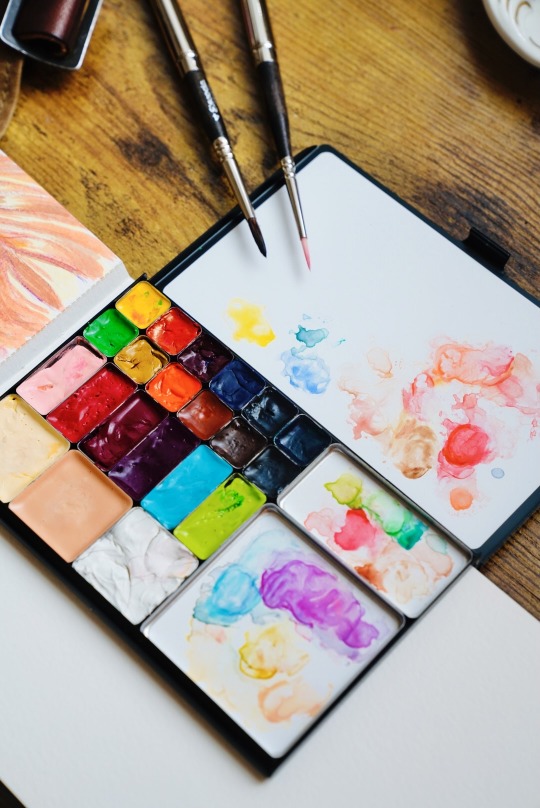
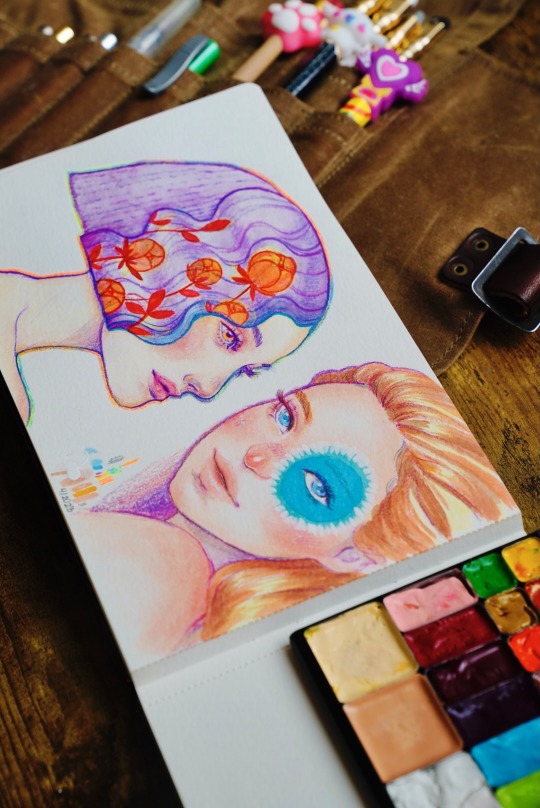

#sketchbook#watercolor sketchbook#painting#watercolor painting#traditional art#Moleskine#moleskine art#Moleskine art sketchbook#art toolkit#peg and awl
20 notes
·
View notes
Text
Episode 5: Sonja Drimmer on Hieroglyphs, the wonder of creativity, and the Abduction of Ganymede

In Episode 5 of Inside My Favorite Manuscript, Dot and Lindsey chat with art historian Sonja Drimmer about British Library Royal MS 12 C iii, an early 16th century manuscript that purports to be a guide for translating Egyptian hieroglyphs but in reality is so much more than that.
Listen here, or wherever you find your podcasts.
Join our mailing list to receive weekly updates about the IMFM pod!
Below the cut are photos of some of the specific things we discuss in this episode.
British Library Royal MS 12 C iii has been fully digitized here. If you really want to see the book I suggest you take the time to look through this, because unfortunately the images here in the post aren’t very high quality (although I hope they will give you a sense of the content). If you want to zoom in close, go to the website.
The exhibition that Dr Drimmer co-curated during her fellowship at the British Library: Royal Manuscripts: The Genius of Illumination (blog post at British Library)
The resulting article. Read this if you want to know more about Royal MS 12 C iii! Sonja Drimmer, 'The Hieroglyphs of Kingship: Itay's Egypt in Early Tudor England and the Manuscript as Monument', Memoirs of the American Academy in Rome,59/60 (2014/15), pp. 255-83.
Manuscript pages mentioned during our conversation
Folio 2r: Index (note the slightly darker words in a different hand on the right side of the right column, and “Arundel” and “Lumley” added at the bottom.

Folio 3r: Natura (illustrated with fire)

Folio 3v: Amor (Also illustrated with fire?), Vita (illustrated with an oil lamp)

Folio 4r: Custodia (illustrated by a dragon); Deffensor (illustrated by a helmet)

Folio 19v: An example of a sentence made with the “hieroglyphs”, with the Latin translation provided below

Folio 20r: Another example of a sentence built with “hieroglyphs” with Latin below

Horopollo’s Heiroglyphica, digitized
Folio 6r: The Abduction of Ganymede, repurposed.

The pyramid at Nonsuch Palace
Luttrell Psalter
12 notes
·
View notes
Text
As reported in The Philadelphia Inquirer and The Daily Pennsylvanian, the British-born Shakespearean actor Maurice Evans came to Penn's campus in 1937 to view the gloves and the Shakespeare folios.
"He put the gloves on, and the curators told him that anyone who wears those gloves will die within a year. And he immediately takes them off," Meyer says. "And so, I was wondering, did they make that up at the time, or does that curse go back farther? And I haven't quite answered that part of the question yet, but it was just an added element of excitement that got repeated a lot and then was in the press about the gloves."
Evans lived until he was 87, thus casting doubt upon that particular theory.
6 notes
·
View notes
Text
Astonishing Artifacts: The Book of the Damned
Sources: Pathfinder Player Companion on artifacts & the book of the damned.
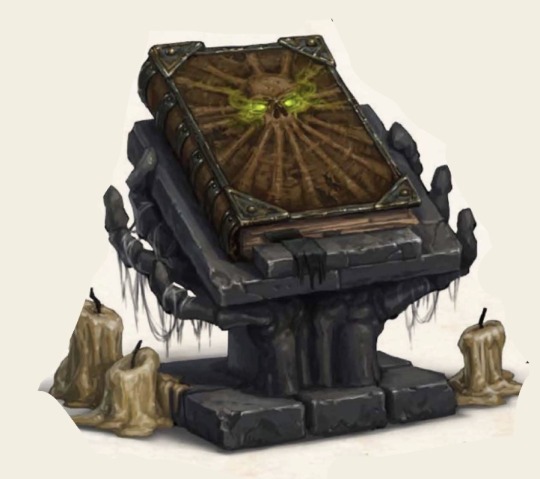
Image source: Pathfinder Campaign setting, Artifacts & Legends, pg. 15.
“Held between covers of bladed steel, stretched human flesh, and compressed ashes, this massive collection of loose folios, leathery scrolls, and gory manuscripts is the authoritative volume on unspeakable topics and evils for which there are no names.”
The Book of The Damned is the total sum of all profane knowledge and evil lore in the multiverse. It defies all logic, being possessed of more information than any tome of its size should be able to hold. It contains numerous different topics divided into different sections, which are rarely found all together. Should all chapters of this foul book be combined, its malicious intelligence awakens.
When fully combined, The Book of The Damned radiated dark energy in a large area, and evil creatures across the planes become aware of its location and desire to have it. Any good-aligned being that dares to touch it risks being slain immediately, and any being that uses this book is damned immediately.
Dark Talisman. The Book can be attuned to a powerful evil owner, allowing them to cast dark spells they shouldn’t normally have access to, and giving them insight to the workings of evil in the multiverse.
Reference of Evil. The Book of the Damned can be used to learn the dark secrets of reality, but the Book is written in a combination of languages and codes which can take up to a month to fully decipher. After an owner spends the time to understand this maddening tome, they can consult it to answer any obscene question regarding any dark topic of the multiverse.
Accursed Archive. An owner of the Book of The Damned can cause it to fold into itself, opening a horrific wound in reality that acts as a portal to a perverse demiplane. Visitors to this space find themselves in an unnerving library filled with infinite records of every evil deed in the multiverse. These articles are constantly being written, with the Book’s evil consciousness always compiling new lore. Not even the gods know the full breadth of this space, and it is curated by strange manifestation’s of the Book’s will.
The History & Legend of the Book of The Damned:
The Book’s history begins with the legendary angel Tabris. He was charged by Heaven to catalogue all knowledge in the multiverse, and appointed an army of lesser angels to aid in this task.
After spending eons chronicling all knowledge regarding the topics of good, law, chaos, and neutrality, he led his army to descend into the Lower Planes to take on the daunting task of cataloguing all evil in reality.
Tabris and his scholars never returned. His heavenly siblings mourned the loss of him and the knowledge he sought, but presumed him dead.
Unless killed, most good-aligned outsiders are ageless. Even in the timespan of celestials, Tabris was gone far too long in the Planes of Perdition for survival to be a possibility.
Despite this, He emerged from the maelstrom and returned to heaven broken and bearing the original manuscript of The Book of The Damned.
At first rejoicing his discoveries and return, the hosts of Heaven were appalled upon looking into his research. Tabris had faced pure and absolute evil, and unflinchingly recorded every ounce of it. In the eons he was away, he’d interviewed with the most horrific monstrosities of the multiverse.

Image source: Book of The Damned, pg. 255
The judges of Heaven criticized his work harshly. He had catalogued the machinations of fiends spanning timelines, sins without name, and infinite blasphemies with unflinching accuracy. He’d even sacrificed a piece of his soul and placed it within the Book, to constantly update the tome whenever a new evil occurred.
Tabris was not ashamed of his work, as he was convinced he’d successfully accomplished his task. In his confidence, the Celestials saw corruption. He was stripped of his heavenly power, barred from the planes of good, and cast out for his actions.
Before Heaven could destroy the horrid tome, it was scattered. It’s endless chapters on different subjects split apart into a multitude of dark spellbooks and horrific artifacts, each seeking to be reconnected with the other pieces throughout the multiverse.
Ramifications:
Damnation. All owners and users of The Book of The Damned have their souls Damned to one of the lower planes upon their death. Which plane of perdition they are sent to depends on their actions and what they do with the knowledge gleaned from the Book, and this damnation can only be stopped with direct divine intervention.
Fiendish Plans. Every fiend in the multiverse would do unspeakable things for a glimpse into this horrid book. Evil demigods and archfiends of all varieties constantly have agents out in the planes searching for chapters of the Book, and should one assemble it, they’d be given a supreme advantage over their peers and rivals. There aren’t words to describe what one of these beings would do to take control of the full Book.
Blasphemous Lore. The Book of The Damned is not pursued only by fiends. Celestials across the planes hunt down this Book and it’s readers, hoping to prevent its foul knowledge from spreading.
Beyond the Book:
One of the most famous aspects of the Book is the Demi plane concealed within its pages. Once an owner attunes to this artifact, they can open a doorway inside the Book.
This plane appears as a dark, vast library filled with a miasma of fog. Within this library, vast layers of bone-white stone supports shelves made of dark crystal. Each of these shelves hold tablets, books, and manuscripts on all manner of profane lore.
When touched, these articles explode into diagrams, visions, and voices detailing all the collected knowledge held within the Book. In reality, the physical book just serves as a window, each page connected to the demiplane to reveal dark knowledge. Each shelf has a topic, and all topics are organized perfectly, although this organization can be difficult for mortals to comprehend.
At the center of the plane is the largest crystalline tablet, which contains just a single piece of paper with a forbidden tune written upon it. From here, a path leads to the heart of the plane, known as the Unspeakable Word.
The unspeakable word could be considered to be the last page of The Book of The Damned, the record of Tabriz’ ultimate sin— Cataloguing every evil in the multiverse. It appears as a massive, diseased heart bound in crystal chains. Through this organ, every single evil thought in the multiverse flows through to the Book, and is recorded unflinchingly.
Knowledge of the Damned:
The longer an owner deciphers the Book or researches within the demiplane, the more foul knowledge is revealed to them. Many risk madness or destruction just by looking into the book, and very few actually succeed at finding the knowledge they search for. Over time, their discoveries gradually reveal more and more dark information about reality.
The book takes as much as it reveals, though. Whenever a being learns new information from the book, it will attempt to corrupt them. The more profane the knowledge, the more the Book twists it’s reader towards evil.
Some topics held within The Book of The Damned are:
Historical accounts of villains and atrocities committed on different worlds. This information causes a being to become cruel and insulting.
Truths regarding conspiracies and mysteries around the multiverse. This information causes the reader to feel a weight within their mind as the Book presses its influence into them.
Details about ancient dooms and prophecies, and information about ecologies of evil species. This information drains the reader’s intelligence, filling their mind with darkness.
Cryptic reports regarding evil forces in the multiverse, such as the histories of archfiends, details on cosmic horrors, and studies into the natures of fiends. This information convinces the reader of blasphemous connections, twisting their alignment towards evil.
Detailed maps and overviews of evil planes, in addition to foul rituals and spells for the manipulation and binding of fiends, along with the locations of planar portals and evil artifacts. This information enchants the reader, forcing them to continue researching as a perverse fascination develops.
Details regarding evil sites throughout the multiverse, and detailed biographies of great villains. There are instructions on how to destroy good artifacts, or profound revelations in dark magic. The researcher’s imagination is tainted by this knowledge, causing them to crave even more knowledge and power for themselves.
Maps to even more forbidden knowledge and artifacts, and hidden information about most fiends such as true names or origins. This information haunts the reader, causing them to be attacked and drained by the evil spirits trapped within the book.
Secret biographies of evil demigods, specific information regarding the Great Old Ones, and specific accounting of every evil item, deed, and event in the multiverse. Any researcher who reaches this point is already pushed past redemption, and is turned completely towards evil and damnation.
Secrets even the gods don’t know. Divine failures, primeval knowledge, and the truth of evil beyond reckoning. Just as a researcher culminates their pursuit of knowledge, the Book manifests before them and demands servitude. If the researcher refuses, they must escape or be annihilated.
The Keeper of the Book:
There are no fiends or entities native to the Book’s Demiplane. There is only one being, known as the Voice of The Damned.
Tabris himself realized that his task was near-impossible— any book, regardless of its size, would automatically become outdated if it recorded all evil in the multiverse. To combat this, Tabris locked away a fragment of himself in the book, in order to record all forbidden knowledge for eternity.
This act of corrupting a piece of himself to complete his charge ensured his exile, but also determined that the Book would always have a hidden caretaker. In the eons since Its creation, the Voice has only become ever more powerful and obsessed with forbidden knowledge.
The Voice of The Damned is bound to the demiplane within the Book, and serves as the Book of The Damned’s consciousness. It knows every single piece of information held within, and is devoted to spreading the dark information it possesses throughout the multiverse.

Image source: The Book of The Damned, pg. 171.
Ideas for using the Book of The Damned in a Campaign:
The chapters of the Book can always serve as good McGuffins, whether the players are searching for specific lore or are trying to collect the pieces of the Book.
A powerful Fiend offers the Party a massive reward for every chapter of the Book of The Damned they bring back to it. Little do they know, the Fiend intends to trap the party in the Book’s Demiplane, trying to force them to research for it so it doesn’t risk anything.
The party is facing an ancient and obscure evil, and the Book of The Damned seems to be the only way to learn how to defeat it.
A Celestial tasks the Party with attempting to destroy the Book of the Damned, piece by piece. Unfortunately, each chapter of the Book has its own unique form of destruction, and they must all be performed quickly or else the Book will simply reform itself.
The Antagonist has gotten ahold of the Book of The Damned, and is currently holed up in the demiplane to research. The party must find the portal and infiltrate the demiplane in order to defeat the Antagonist.
The Book Of The Damned served as a repository of all evil knowledge in the multiverse. It can either be a very useful tool, or a terrifying weapon, all depending on its current owner.
I have never been in the presence of more than one Chapter from the Book, but I know that when they find eachother, they fuse together and become slightly more powerful. Once the book is completely formed, its malicious intelligence will awaken and seek an owner to spread its corruption with.
The only chapter I’ve had the opportunity to read was an obscure manuscript regarding how the Book constantly seeks out new information. As far as I know, I’ve had no Ill-effects, showing that not all of the knowledge this book holds is capable of corrupting the reader.
Yes, I am now a Warlock devoted to cataloguing knowledge. There is no relation.
- A Weird Warlock.
#wowieweirdwarlock#pathfinder#pathfinder lore#the book of the damned#pathfinder artifact#it took me so long#:.(#WWW: Astonishing Artifacts
4 notes
·
View notes
Text

KOLAJ LIVE ONLINE
Artists in the Archives: European Collagists' Perspectives on American Archives
Saturday, March 11, 2023, 2PM EST. On the occasion of the 50th anniversary of the Stewart-Swift Research Center, the Henry Sheldon Museum of Vermont History invited an international network of collage artists to engage with historic material in the archive and to create a folio of collage prints that reflect on the idea of community in a 21st century world. Five artists who participated in the project did so from Europe. What did their unique perspective draw from the archive? Artists from Poland, Scotland, Ireland, Denmark, and Ukraine will join project curator Ric Kasini Kadour for a conversation about European perspectives on American history and place. MORE
*****************************
Kolaj Magazine, a full color, print magazine, exists to show how the world of collage is rich, layered, and thick with complexity. By remixing history and culture, collage artists forge new thinking. To understand collage is to reshape one's thinking of art history and redefine the canon of visual culture that informs the present.
SUBSCRIBE | CURRENT ISSUE | GET A COPY
SIGN UP TO GET EMAILS
#collage#collage art#collage artist#art#artist#art history#art project#art show#vintage art#art books#art education#book art#artistic#contemporary art#artwork#modern art#fine art#digital art#public art#contemporary artist
4 notes
·
View notes
Text
Patton Oswalt And Jordan Blum Signed Copies Of 'Marvel Unforgettable Stories' To Go On Sale From Folio Society [EXCLUSIVE]
Comic Book Club can exclusively reveal that the Folio Society will release 100 signed copies of Patton Oswalt and Jordan Blum's Marvel Unforgettable Stories, on sale this Monday.
Next week, The Folio Society will release Marvel Unforgettable Stories, a collection of classic tales curated by Patton Oswalt and Jordan Blum. And Comic Book Club can exclusively reveal that the company will be releasing an extremely limited supply — 100, total — of copies signed by Oswalt and Blum. The 100 signed copies will be available Monday (November 25, 2025) at 4pm UK / 11am EST / 8am…
0 notes
Text
Patton Oswalt And Jordan Blum Signed Copies Of 'Marvel Unforgettable Stories' To Go On Sale From Folio Society [EXCLUSIVE]
Comic Book Club can exclusively reveal that the Folio Society will release 100 signed copies of Patton Oswalt and Jordan Blum's Marvel Unforgettable Stories, on sale this Monday.
Next week, The Folio Society will release Marvel Unforgettable Stories, a collection of classic tales curated by Patton Oswalt and Jordan Blum. And Comic Book Club can exclusively reveal that the company will be releasing an extremely limited supply — 100, total — of copies signed by Oswalt and Blum. The 100 signed copies will be available Monday (November 25, 2025) at 4pm UK / 11am EST / 8am…
0 notes